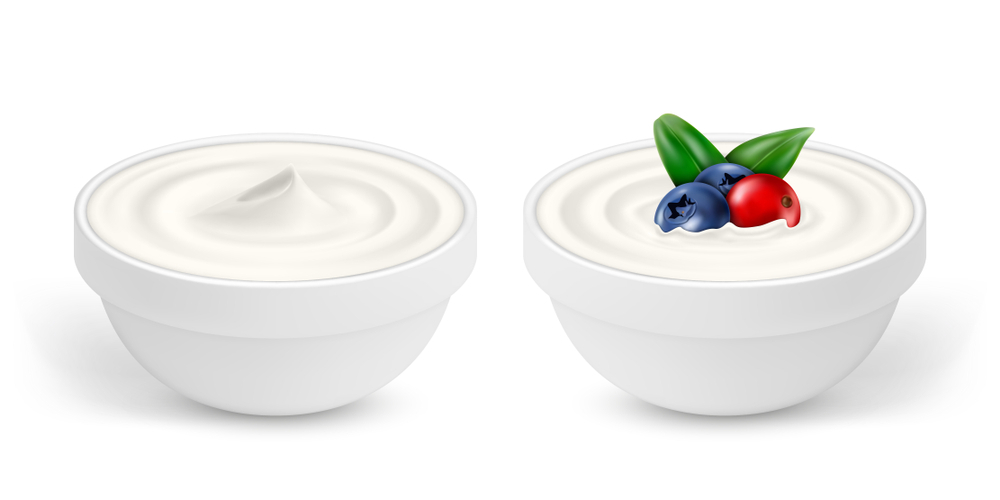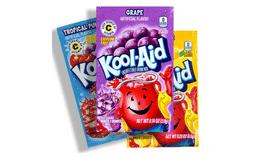We all have seen Greek yogurt perhaps in our local grocery stores as well as on tv and in magazine ads.
It sounds appealing yet a little exotic.
1-What exactly is Greek style yogurt?
We are all familiar with regular yogurt, the creamy, delicious for breakfast, comes in the perfect container meal that has an excellent source of calcium, protein, vitamins B6 and B12, just to name a few.
Having the word “yogurt” in it, it must be a part of the same family, right?
Well, the easiest way to answer the question, “What is Greek yogurt?” is basically yogurt that has been strained.
So then, what is strained yogurt?
There are two main parts that make up yogurt.
First is the yogurt, then there is the whey.
When the yogurt is strained, it separates the yogurt from the whey.
The whey, which is the milk serum (often acidic containing the yogurt’s lactose or milk sugar) and the whey protein, is removed.
What happens to the whey?
Though the dumping of whey is illegal here in the United States because it is hazardous to marine life, farmers have found other ways to use the whey, for example in fertilizers.
After the whey is removed from the yogurt, what remains is a yogurt that is much thicker with more protein, commonly known to us as Greek yogurt (click here to view other benefits of Greek yogurt).
Due to the popularity of Greek yogurt over the past five years here in the United States, dairy sales have more than doubled (Euromonitor International)!
Even extra space is being created in grocery stores by eliminating items with low sales such as margarine to provide more room for Greek yogurt.
2-Is greek yogurt from greece
Greek yogurt is not actually from Greece but was coined the term Greek yogurt referring to the way the yogurt is produced.
In Greece, strained yogurt (or Greek yogurt as we know it) is often made from sheep’s or goat’s milk.
In the more recent years, they have started to use plant milk as well.
This strained yogurt is often used as a base for popular Greek dishes such as tzatziki dip and as a dessert accompanied with some vegan honey or fruit.
Other countries such the Middle East, Central and South Asia also use strained yogurt in a variety of their dishes.
3-Greek Yogurt Vs Regular Yogurt

One common question is:
“What is the difference between Greek yogurt and regular yogurt?”
We now know that Greek yogurt has the whey removed whereas regular yogurt does not.
They are both healthy but because the whey has been removed from the Greek yogurt, there is less sugar, less carbohydrates and much more protein than in regular yogurt.
There is a distinct difference in taste as well as in texture.
Greek yogurt is more tart and thick in texture compared to regular yogurt, which can be much sweeter and creamier.
Both can be enjoyed by itself or with some fruit and nuts.
One unique thing about Greek yogurt is that it can be a substitute for various cooking ingredients often making the dish healthier.
Click here to view some other differences between Greek yogurt and regular yogurt.
4-How to Make Sure You’re Buying Greek Yogurt
Be cautious when purchasing Greek yogurt.
With so many different brands currently on the market, it may be difficult to choose.
If you don’t mind what ingredients are in your Greek yogurt, you can skip this section, but if you do, follow this guide!
The term “Greek” is still unregulated so some yogurt brands as well as other food brands have been advertising their product as “Greek” when in fact, it has not been made 100% in the traditional way, therefore making it not truly Greek.
Sometimes thickening agents such as cornstarch and milk protein concentrate are added to the product to resemble the texture of Greek yogurt.
Though it is still unsure whether these extra agents are nutritionally beneficial for us, they can take away from the true form of what Greek yogurt is.
Here are some tips to detect if your yogurt is really Greek.
1. Read the Label :
We often read the list of ingredients for other products we purchase, why not read the ingredients in your Greek yogurt!
The main ingredients that should be listed in your Greek yogurt should be milk and the live and active cultures.
If you purchase Greek yogurt that already has the fruit in it, these ingredients will vary.
2. Contains Probiotics :
Probiotics are healthy, live bacteria that brings balance to your intestines.
Often known as good bacteria, probiotics also helps with promoting good digestive health and boosts immunity.
When reading a Greek yogurt ingredients label, it may state that it is made with live and active cultures.
We actually don’t want our live and active cultures to be made with , we want them INSIDE our yummy Greek-ness.
So make sure the label says that your Greek yogurt CONTAINS live and active cultures.
3. Skip Greek Yogurt Sold on Shelves :
You may have seen products such as cereals and granola bars that contain “Greek yogurt.”
Whether it contains Greek yogurt clusters or as a topping, it is not truly Greek yogurt.
Greek yogurt, as mentioned previously, has live and active cultures in them.
If these cultures are live and active, there is no way it can survive sitting on a unrefrigerated shelf.
Live and active cultures, or probiotics, need to remain refrigerated for their full effectiveness.
Also, these “healthy” cereals and bars may contain more sugar than you would like. It is important to read the label.
4-Frequent Asked Questions About Greek Yogurt:
1- Can You Freeze Greek Yogurt
YES! By freezing Greek yogurt, it will keep for about three months.
During this time, the live and active cultures will remain dormant.
Once defrosted, the cultures will become active again. How amazing is that!
2- How Long Does Greek Yogurt Generally Last
Expiration dates for Greek yogurt may vary but the average length of time is usually about a month.
3- My Greek Yogurt Has Already Expired .Is It Still Safe To Eat?
Usually, Greek yogurt is still ok to consume 1-2 weeks after the stamped expiration date.
A good rule of thumb would be to taste and smell the yogurt before consuming.
If it doesn’t smell or taste right to you, don’t eat it! Or if you’re like me and a little paranoid about expiration dates, toss it.
4- Where Can I Buy Greek Yogurt
Greek yogurt can now be purchased pretty much at any of your local grocery and organic stores.
Generally, it will located right next to the regular yogurts in the refrigerated section.
The packaging looks very similar to regular yogurt so make sure you read the label before purchasing.
If you are looking to purchase Greek yogurt in bulk, Costco as well as Sam’s Club is where you want to go.
Generally, when purchasing in bulk, you are limited in brand choice.
Greek yogurt does go on sale so keep your eyes peeled.
Also look inside of your weekly grocery store flyer for sales as well as coupons inside of your local paper.
Online coupons are also available.
5- How To Make Greek Yogurt Face Mask
Benefits:
Great for removing dirt, nourishes skin giving it a healthy glow, reduces redness and calms breakouts.
Special Note:
If you have sensitive skin, make sure you do a skin test before applying Greek yogurt mask to your face.
Items Needed:
Several Cotton Balls or Round Cotton Pads, One Bowl, 3-4 Tbsp. of Plain Greek Yogurt (make sure it’s cold), Probiotic Capsules (OPTIONAL and can be purchased at your local health food, drug store or here on amazon)
Directions:
In the bowl, place 3-4 Tbsp. of Greek yogurt.
Optional: Open 1 probiotic capsule, add to Greek yogurt and mix Use a cotton ball/pad to apply yogurt onto your face in even layers avoiding the eye area.
Keep mask on for about 10 minutes then rinse well with warm water. Pat dry with a towel.
READ : Salton ym9 1 quart yogurt maker review
6- How To Make Homemade Greek Yogurt
Motivated to make homemade Greek yogurt?
The recipe and process is quite simple.
Though there are special strainers out on the market (click here to view the Euro Cuisine GY50 Greek Yogurt Maker), it is not necessary to make your homemade Greek yogurt.
Items Needed:
A Clean T-shirt, Cheesecloth or Fine Mesh Strainer, One Bowl, One Quart of Plain Yogurt
Directions:
Place the clean t-shirt, cheesecloth or fine mesh strainer over the bowl.
If you are using a t-shirt or cheesecloth, make sure that it is secured tightly onto the bowl (use string or rubber band).
Pour the entire quart of plain yogurt onto the clean t-shirt, cheesecloth or fine mesh strainer.
Place the entire bowl with the plain yogurt, t-shirt, cheesecloth or strainer into the refrigerator and let it sit for a few hours.
Your Greek yogurt is ready when you see the thick yogurt on the t-shirt, cheesecloth or fine mesh strainer and the whey (watery substance) in the bowl.
Keep your homemade Greek yogurt refrigerated.
Because it is homemade, it will only keep for about one week.
What should you do with the leftover whey?
There are several ways you can put it to good use.
You can dilute it with 6 parts water to fertilize your plants, create a marinade with it, or add it to pizza or any other kind of dough!
RECENTS ARTICLES :




